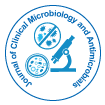

Onaolapo JA, Igwe JC, Bolaji RO, Adeshina GO and Parom SK
Periodic antibiotic susceptibility study is imperative for the treatment and management of disease outbreak in clinics, community and poultry farms. This study evaluated the antibiotic resistant profile of S. aureus isolated from poultry farms in Kaduna metropolis. S. aureus isolation and biochemical identification were carried out using standard microbiological techniques, while susceptibility test was carried out using agar disc diffusion method. The result showed that out of 670 samples collected from broilers and layers nostril, cloacae, trachea and droppings and the farm workers’ ears and nostrils; 164 (55.8%) S. aureus were identified. Other Staph species identified were Staph. xylosus (19.5%), Staph. hyicus (6.8%), Staph. cohnii (6.8%) and Staph. intermedius (3.7%). S. aureus was more in layer (51.2%) samples than broilers (48.8%) poultry birds samples in Kaduna metropolis. High resistance was observed against tetracycline (76.8%), ciprofloxacin (60.4%), oxacillin (36.6%), and cotrimoxazole (26.6%). While the isolates showed significant susceptibility to cefoxitin (97.7%), amoxiclav (97.6%) and gentamicin (96.9%). On comparing the percentage resistance of the isolates, this study observed that isolates from farm workers were more resistant to tetracycline, ciprofloxacin, cotrimoxazole and oxacillin than those from broilers while layers were the list resistant. Isolates from layers exhibited high multidrug resistant profile of 81.5% followed by those from farm workers (66.7%), then isolates from broilers (45.9%). High percentage (81.7%) of the S. aureus had MAR index ≥ 0.3 and 49.4% (81/164) were multidrug resistant. The most resistance patterns observed among the MDR isolates were: TE, CIP, and OX=12.8% (21); TE, CIP, VA=10.4% (17); TE, CIP, and SXT=7.3% (12); TE, CIP, SXT, and OX=7.3% (12); and TE, CIP, VA, and SXT=6.7% (11). The high resistance to tetracycline and ciprofloxacin showed their frequent use in poultry farm in Kaduna metropolis and immediate action should be taken to correct this anomalies’ as this might contribute significantly to community associated multidrug resistance, increased morbidity and economic loss.